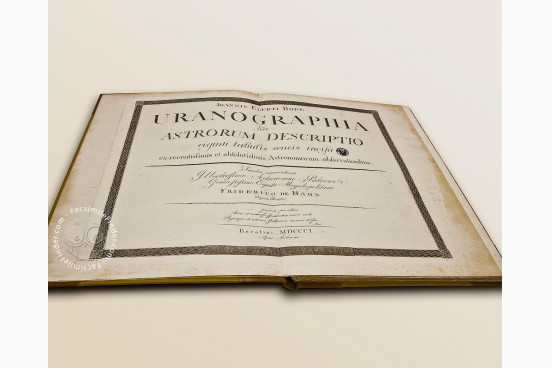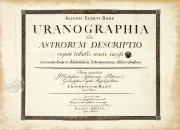The eighteenth century is often called the age of astronomical discoveries. Owing to Newton's laws of motion that now seem so simple and obvious, astronomers finally became equipped with solid grounds for their calculations. Furthermore, the invention and perfection of the telescope allowed them to study heavenly bodies that previously could not be seen from the Earth. The greatest discovery of the time owes its name to German astronomer Johann Elert Bode.
The Appeal of the Unknown
Bode was keenly interested in the discovery of the new planet, he not only named it, but also in his Astronomical Yearbook provided many examples of prior instances where it was unwittingly observed. At the time, after 1782, Bode became so engulfed with all issues pertaining to Uranus, publishing and his duties in the Academy of Sciences that he ceased to observe the sky as dutifully as before.
In 1787, he became the director of the Berlin observatory, and in 1801 published his atlas of stars calling it Uranographii in honour of the recent discovery. The atlas is a spectacular collection of twenty maps of the sky with a catalogue of 17,240 stars and, a novelty in such atlases, nebulae (including those discovered by Herschel) or double stars.
The Interpretation of the Constellations as People, Animals, or Phenomena
Uranographia sive Astrorum Descriptio (i.e. Uranography or Description of Stars), as this is the full title of the atlas, is a synthesis of numerous works of earlier astronomers, but also Bode's own discoveries (of which some where invalidated after more powerful telescopes were invented). This is a combination of astronomical observations and scientific investigations with an artistic interpretation of constellations as persons, animals or phenomena inscribed into the map of the sky. This was the last atlas to be a scientific work and work of art at the same time, the last from the golden age of the cartography of the sky, and the greatest publication of such type. It was published in five parts from 1797 to 1801. This collection contains nearly all maps from those five parts.
The Art of the Book: the Last of his Kind
The original comes from the collection of the Copernican Library in Torun, where it arrived from the collection of the Torun library of the Protestant Academic Gymnasium founded in 1568 by mayor and humanist Henryk Stroban and later Coppernicus-Verein für Wissenschaft und Kunst in Torun. It was purchased by the Torun institution after it was published in Berlin for the purposes of educating students and remained in the Torun collections as an extremely valuable work.
It was printed using the offset method on smooth paper. Uranographia is hand-bound in stamped parchment, canvas and leather, and the title of the front cover is gilded. The distinctive sowing and gluing of the leafs of the atlas allows it to be opened fully and flatly to expose the star maps without loss of details on bends.
The Author
The author and publisher of this atlas, Johann Bode, retired in 1825 after nearly 40 years of working for the German Academy of Sciences. He is famous not only for his astronomical discoveries, naming one of the planets of the Solar System, but also, maybe even above all, for his intense publishing activity. He died in 1826 in Berlin while working on the Astronomical Yearbook for 1830. As a scientist and publisher who had a great contribution in the development to astronomical sciences, he was honoured as the namesake of a crater on the Moon, an asteroid, as well as the comet and galaxy he discovered.
We have 1 facsimile edition of the manuscript "Uranographia": Uranographia facsimile edition, published by Orbis Pictus, 2010
Request Info / Price










